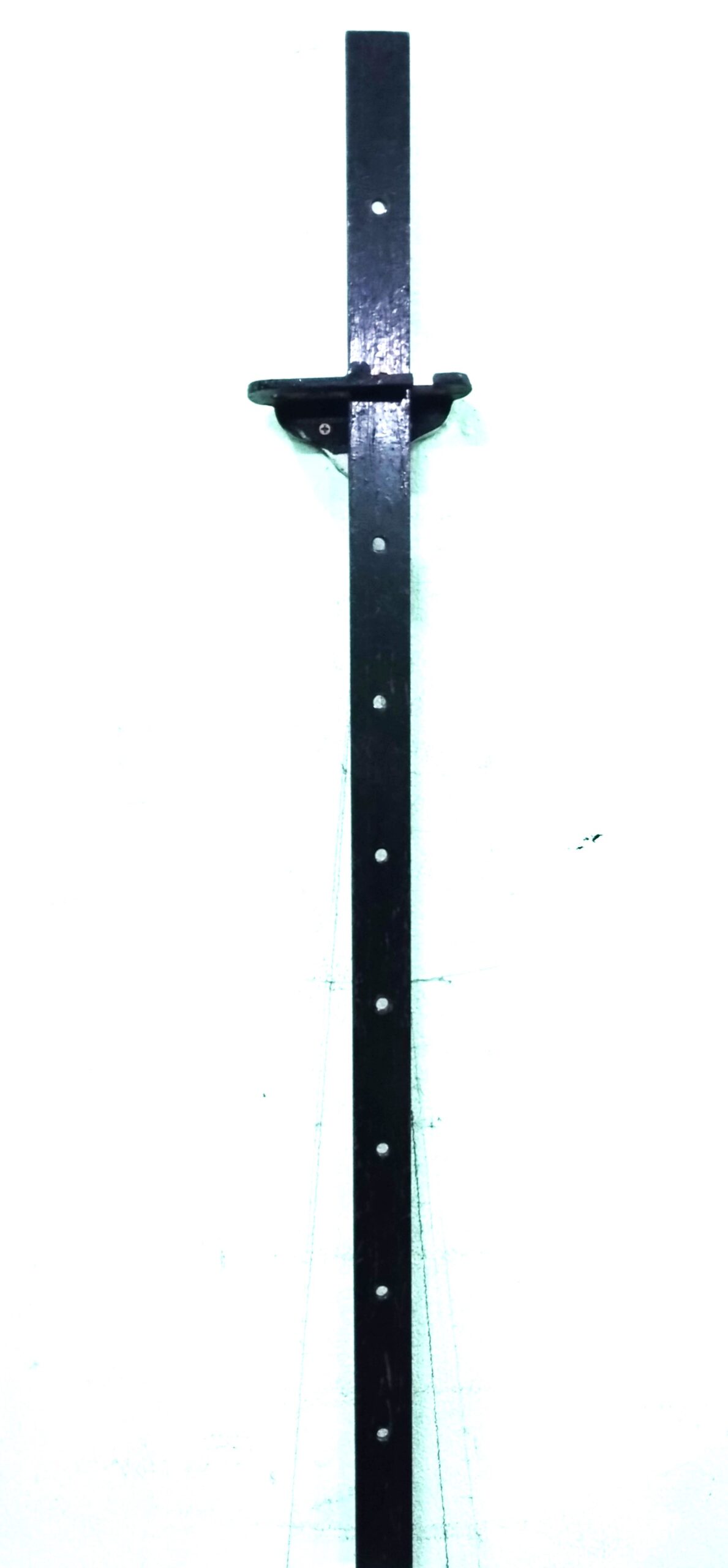To Study the Theorem of Parallel Axes of Moment of Inertia
1. Aim
To verify the Theorem of Parallel Axes for moment of inertia experimentally by determining the moment of inertia of a given body about two different parallel axes and establishing the relationship between them.
2. Apparatus Used
- A rectangular or circular metallic bar/object
- A knife-edge support (for oscillation)
- Stopwatch
- Vernier calipers
- Meter scale
- Weighing balance (to measure mass)
- Thread or thin wire (for suspension)
3. Diagram

Figure: Experimental setup showing the object suspended from two different parallel axes
4. Theory
The Theorem of Parallel Axes states that the moment of inertia (I) of a body about any axis parallel to an axis passing through its center of mass (I₀) is given by:
Where:
- \( I \) = Moment of inertia about the new parallel axis
- \( I_0 \) = Moment of inertia about the center of mass axis
- \( M \) = Mass of the body
- \( d \) = Perpendicular distance between the two parallel axes
This theorem helps in calculating the moment of inertia of a body about any axis if its moment of inertia about a parallel axis through the center of mass is known.
5. Formula
1. Moment of inertia of a rectangular bar about its center of mass (I₀):
\[ I_0 = \frac{M L^2}{12} \](For a thin rod of length L and mass M)
2. Moment of inertia about a parallel axis at distance d:
\[ I = I_0 + M d^2 \]3. Time period of oscillation (T) for a physical pendulum:
\[ T = 2\pi \sqrt{\frac{I}{M g d}} \](Used to experimentally determine I)
4. Experimental moment of inertia (I):
\[ I = \frac{T^2 M g d}{4 \pi^2} \]6. Procedure
Step 1: Measurement of Dimensions
- Measure the mass (\( M \)) of the bar using a weighing balance.
- Measure the length (\( L \)) of the bar using a meter scale.
- Measure the diameter (if circular) or thickness (if rectangular) using Vernier calipers.
Step 2: Determination of I₀ (Theoretical)
- Calculate the theoretical moment of inertia (\( I_0 \)) about the center of mass using the formula:
\[ I_0 = \frac{M L^2}{12} \]
Step 3: Experimental Determination of I
- Suspend the bar from a knife-edge at one end (axis at distance \( d = L/2 \) from the center).
- Allow the bar to oscillate in a vertical plane with a small amplitude.
- Measure the time (\( t \)) for 10 oscillations using a stopwatch.
- Calculate the time period (\( T = t/10 \)).
- Repeat the experiment for different distances (\( d \)) from the center.
Step 4: Verification of Parallel Axes Theorem
- Using the experimental \( T \), compute \( I \) for each \( d \) using:
\[ I = \frac{T^2 M g d}{4 \pi^2} \]
- Compare it with the theoretical value (\( I_0 + M d^2 \)).
7. Observation Table
| S.No. | Distance (d) (cm) | Time for 10 Oscillations (t) (s) | Time Period (T = t/10) (s) | Experimental I (g·cm²) | Theoretical I = I₀ + M d² (g·cm²) |
|---|---|---|---|---|---|
| 1 | 10 | 12.4 | 1.24 | [Calculated Value] | [Calculated Value] |
| 2 | 15 | 14.2 | 1.42 | [Calculated Value] | [Calculated Value] |
| 3 | 20 | 16.0 | 1.60 | [Calculated Value] | [Calculated Value] |
(Fill the table with actual observations.)
8. Calculations
For d = 10 cm:
(Compute using observed values.)
Theoretical I for d = 10 cm:
Percentage Error:
(Repeat for other distances.)
9. Result
The experimental moment of inertia (\( I \)) about different parallel axes agrees with the theoretical values calculated using the Theorem of Parallel Axes within reasonable experimental error (e.g., <5%). Thus, the theorem is verified.
10. Precautions
- Ensure small amplitude oscillations to approximate simple harmonic motion.
- Measure time for multiple oscillations to reduce human error.
- Avoid air disturbances during oscillations.
- Ensure the knife-edge is sharp and frictionless.
- Repeat the experiment for different distances to confirm consistency.
11. Viva Voce Questions
- What is the significance of the Parallel Axes Theorem?
- How does the moment of inertia change with distance from the center of mass?
- Why should oscillations be of small amplitude?
- What are the sources of error in this experiment?
- Can this theorem be applied to any shape? Justify.
- How would you determine the moment of inertia of an irregular body?
